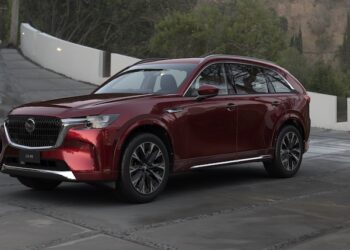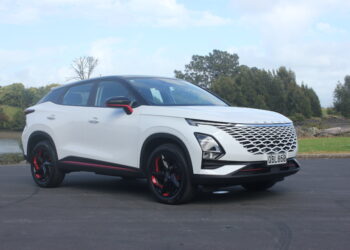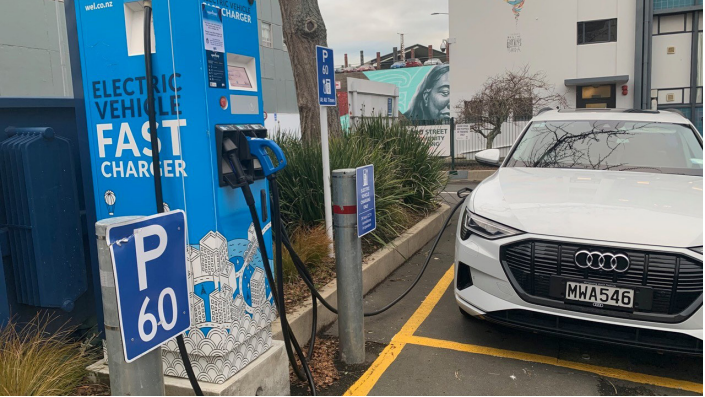
As the saying goes, less is more. And in the case of electric vehicles, or specifically the Audi E-tron, it may just be.
Audi successfully launched their large SUV entrant into the EV market last year in full-fruit ‘55’ form, carrying a 95kWh battery, WLTP range of 417km and a peak output of 300kW (on boost) and 664Nm of torque. Our numbers show 92 were registered last year, and a further 27 this year – in line with what Audi had predicted they could secure.
Read back through our past stories, or check out our Youtube videos, and you will see we here at EVs & Beyond are big fans of the Etron 55. But it is no longer necessarily the pick of the bunch.
That may now fall on the new 50 model, which comes into the fight 120kg lighter, and at an introductory price of $119,990 for the first 25 units, it costs $30,600 less than the E-tron 55 Quattro. Technically this model is an Advanced specification, making it $39,000 less than its direct equivalent.
Even when it returns to its full price of $135,500 that is still $23,400 in your pocket over a 55 Advanced. What else is out there to choose from? Well, a Jaguar iPace is $149,000, and a Model X starts from $157,990.
Ok, so that is about where the numbers wins for the 50 ends. To get the price and weight down the car eschews the 95kWh battery for a 71kWh one, the WLTP range drops from 417km to 328km, and peak power drops to 230kW and 540Nm – though the 0-100km/h sprint time only rises 0.4 seconds to a total of 7.
If we all just purchased the car with the best numbers there would not be a lot of variation on the roads.
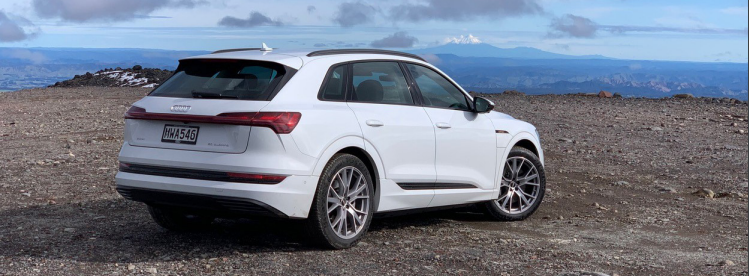
It is in that battery where most of the savings have been made over the 55 Advanced. They look the same, have the same 20-inch wheels. Both feature plush leather seating, have adaptive air suspension, more airbags than I can bother counting. Also standard are adaptive cruise control, lane-keeping system with a lane change assist, pre-collision system, parking distance control and 360-degree camera. One or two items are missing, like front cross-traffic alert, but it takes some nitpicking to find them.
You also get Audi’s brilliant virtual cockpit setup, with two huge screens focussed on the driver. One with your gauges and essential information, one for the infotainment and excellent navigation system – this is one of the few systems I bother to use over Apple CarPlay. I especially liked the ability to plan multi-stop routes between chargers.
REAL-WORLD WINS Audi suggests the 50 is best suited to the city. The option for buyers who want to commute, go to meetings, but not head out on the open road often. Suggest that to an EV nerd, and we will load up the family and head straight out of town. And that is what we did. Two adults, a teenager and a baby, with associated gear loaded to the ceiling, headed south to Ohakune via Taupo, a trip of around 400km and well outside of the 50s range. I figured we would attempt – for safety – to plan drives of no longer than 200km between charges, but anyone with a baby knows driving 200km is pretty much an impossibility.
And so it was with just 122km on the odometer that we rolled into the ABB charger in the centre of Hamilton. The first segment of the trip had been done at an impressive rate of around 28kWh per 100km (we beat this later).
I would suggest the efficiency came from a combination of my lightfoot, the excellent Hamilton expressway, and the 50s ability to run only on its rear motor under a light load. Something I love about these ABB units is that if you are not back when the car is done – yes, naughty, but it was only by a few minutes, and I checked in on Plugshare – it can start charging another plugged-in vehicle.
At the charger in Hamilton is where I first noticed the 50’s unique talent – its rapid charging on 50kW hour units. Yes, it can charge at 120kW, and plenty of cars can now charge faster, but CAN is the operative word. 50kW charge units are likely to provide the backbone of our charging network for some time to come, so if a car can’t play nice with these, then it has a problem.
For example, a Tesla Model 3 (don’t email me Tesla fans, I still love the 3) struggles to get past 44kW on a 50km unit.
The E-tron is still doing that speed at 90% of capacity. This allows you to make use of the full battery capacity on long trips, and keep charging stops shorter.
We could have made it to Taupo on the charge we had left, but an unsettled baby meant a splash and dash while she fed in Tirau. That also allowed us to skip the three-car queue for the DC charger in Taupo the next morning and grab a lunch-length charge in Turangi before heading for Ohakune.
We arrived super refreshed. The E-tron is a pleasure to drive – armchair like seats, plenty of space, excellent soundproofing and light, easy, controls. It is a little sporty and using the adaptive suspension you can make it dance, but on this trip, the cruising vibe was more appropriate.
On arrival, I managed to unpick the masterful packing job that allowed us to get so much onboard. The boot is a massive 660 litres, with additional storage, enough for a couple of soft bags, under the floor. There is a frunk, where I managed to hide a bottle of pinot and my wife’s shoes.
What usually lives here is Audi’s ‘compact charging system’, or the EVSE. It is genuinely a system, able to switch from a house plug to a high-amperage plug (a supplied blue commando) allowing charging at up to 32amp.7.2kW.
Yes, we took the E-tron up the mountain, and managed to talk our way on to the Tesla destination chargers at the top – they are on legacy mode.
Don’t ever plan on using these, as access to them seems to be at the whim of who is running the show that day, and they can be iced in – actual ice as well as ICE cars.
The return trip from Ohakune was more of a reach than the trip out. We left with the meter showing under 200km for a 160km drive distance to Te Kuiti, and so a short top-up at National Park was in order. I shouldn’t have bothered – cruising into Te Kuiti with plenty of range and an astounding 18kWh per 100km consumption figure – the joy of slow weekend traffic and a mostly downhill route.
The next stint next stint was to Taupiri saw consumption higher, but not out of this world – the 93km distance taking around 26kW. This new charging location is going to be great for those heading south from Auckland, there is a new BP centre, a Macdonalds and more to come, and a sparkling new ABB 50kW unit. It also has a 43kW AC plug, which was in use while we charged DC. Multitasking! We topped up to full while filling ourselves up and headed home.
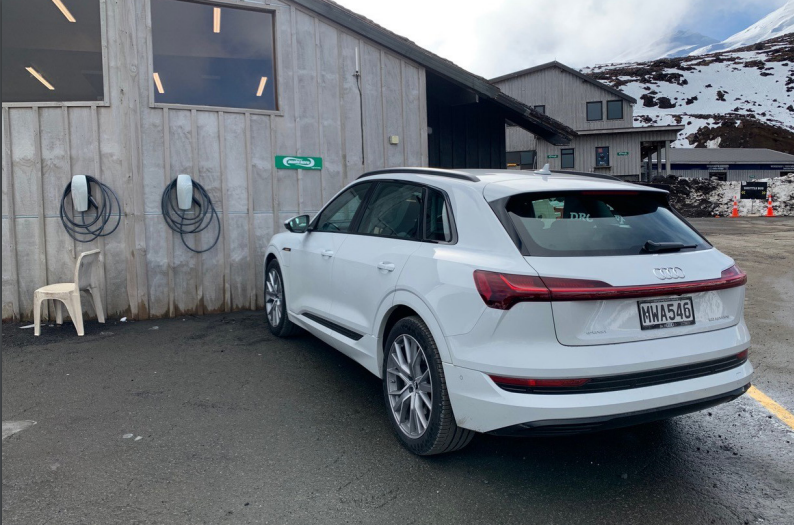
THE ONE TO HAVE
Were you shopping for an E-tron this is the version to have. You do not need that extra range, and you do not need the extra power – this is enough.
In the real world the range of the 50 – 328km on paper, my guess is around 270km in the real world – is plenty, and who drives that far anyway. And the charging times are so short you can easily fill the time.
I also think the E-tron at this price should be compelling to professional drivers operating in the city. Carrying passengers in a large premium sedan? This is just as spacious and comfortable, quieter and has the prestige look. I would suggest the numbers would even work for those in the Corporate taxi trade.
Get past the headline figures, and the E-tron 50 is an impressive, and logical, vehicle.





